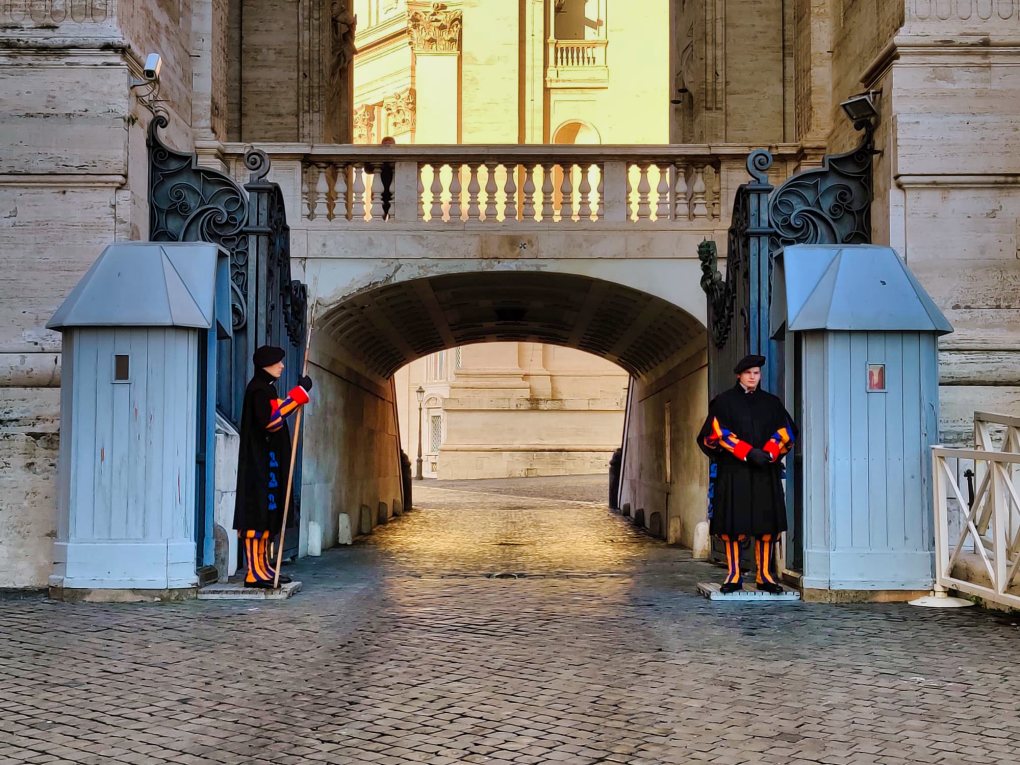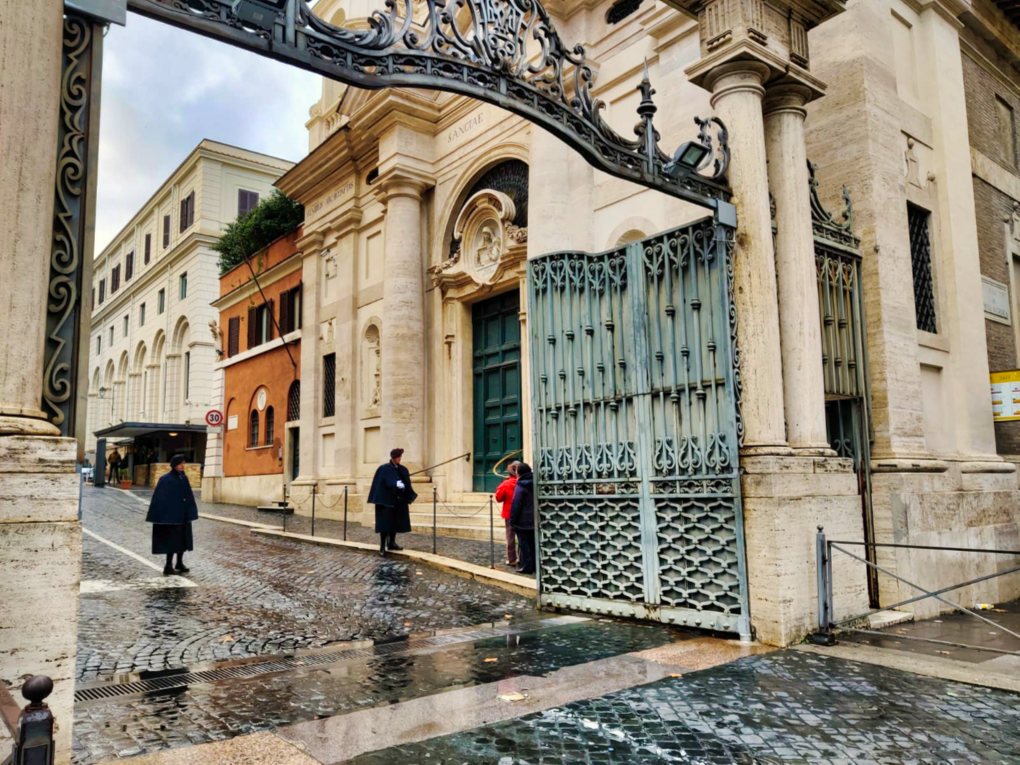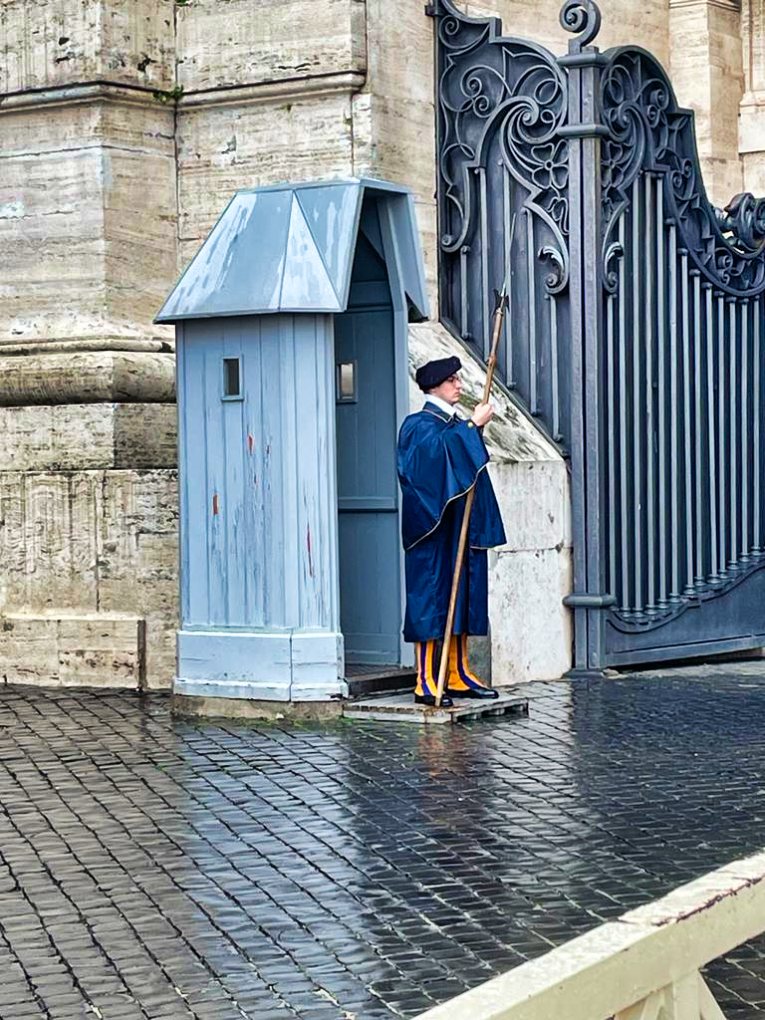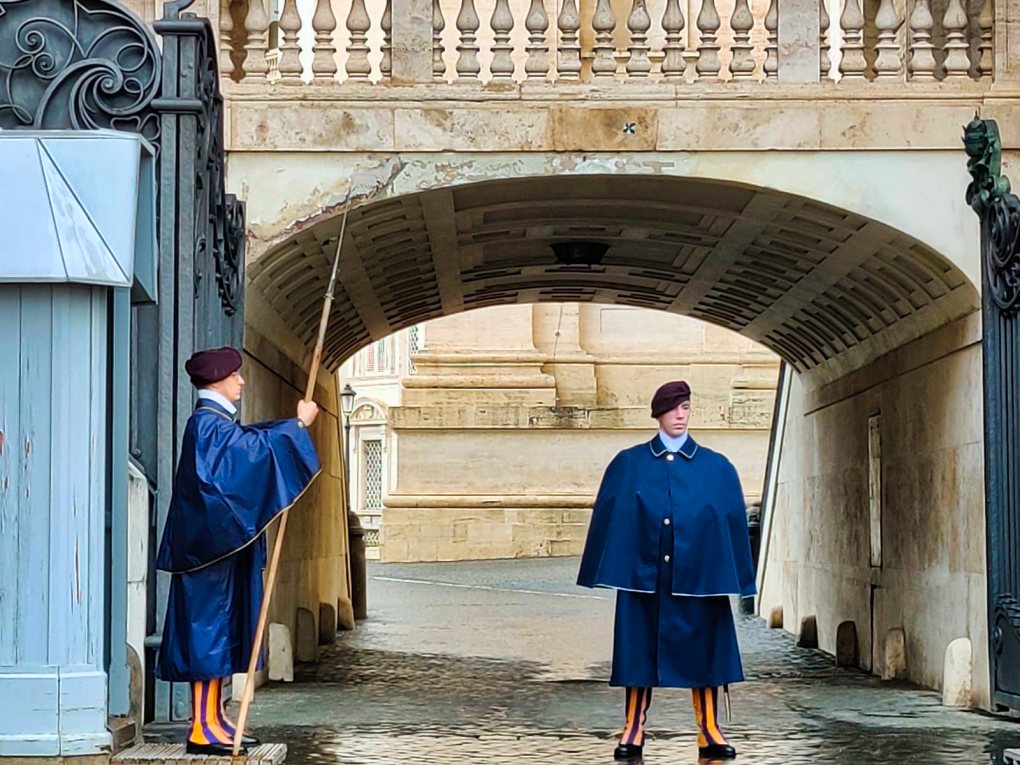
Swiss Guards act as bodyguards of the Pope. They also protect the 108-acre Vatican City and the pontifical villa of Castel Gandolfo. Roman Catholic Church recruits them to the Pontifical Pope’s Army. It is the the world’s smallest army with a strength of 135 active personnel. Swiss Guards have kept the Popes out of harm’s way for more than 500 years.
History
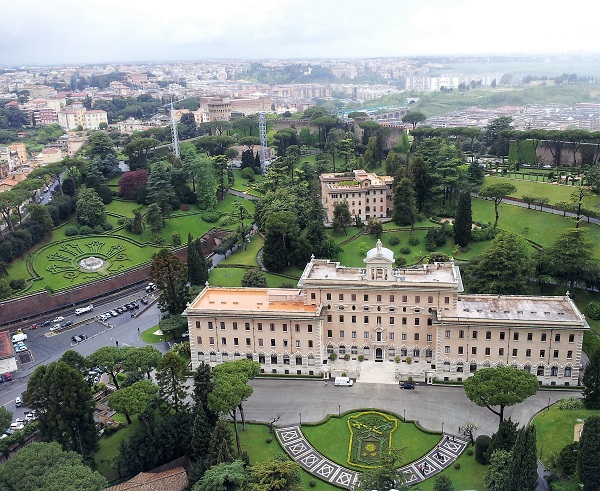
Swiss mercenaries were renowned as among the best soldiers in the world. They served the rulers of several European countries, especially France and Spain. In 1505, Swiss bishop (later cardinal) Matthäus Schiner proposed the setting up of a permanent Swiss unit. In 1506, Pope Julius II established the Pontifical Swiss Guard, making it among the oldest military units in continuous operation.
All but 42 of the 189 guardsmen lost their lives defending Pope Clement VII in 1516. Swiss Guards helped protect John Paul II in 1981 during an assassination attempt in St. Peter’s Square. Since then, there has been a greater emphasis on non-ceremonial roles, with more training in unarmed combat and counter-terrorism operations.
St Peter’s Square comes under the jurisdiction of Italian police while a separate police force is responsible for the security of Vatican City.
Who Can Join Swiss Guards?
Anyone aspiring to be a Swiss Guard has to meet certain criteria.
First, each recruit must be a faithful Roman Catholic as endorsed by his hometown’s Parish Priest. Secondly, each recruit must have a Swiss citizenship and he must be a single male aged between 19 to 30 years (The guards are allowed to marry after serving for some years). And aspirants should be able to obtain a certificate of good conduct. Candidates must also have a high school diploma or a professional degree and should be at least 174 cm tall.
Each recruit is required to complete a basic military training in Switzerland. This will be followed by a five-week induction training course in Rome. After this first training period, Swiss soldiers are called Halberdiers. This title derives from the primary weapon of halberd that Swiss mercenaries used in the 14 and 15 centuries. When the training is complete, Halberdiers are sworn in. They and their families are invited to a private audience with the Pope.
Each soldier serves for a minimum of two years But he can continue in service for an extra year or two. Entry-level halberdiers get a tax-free salary of € 1,500 per month. In addition, they are eligible for free accommodation and board. Members of the guard may be awarded pontifical decorations. The Benemerenti medal is usually granted after three years of meritorious service.
The Uniforms
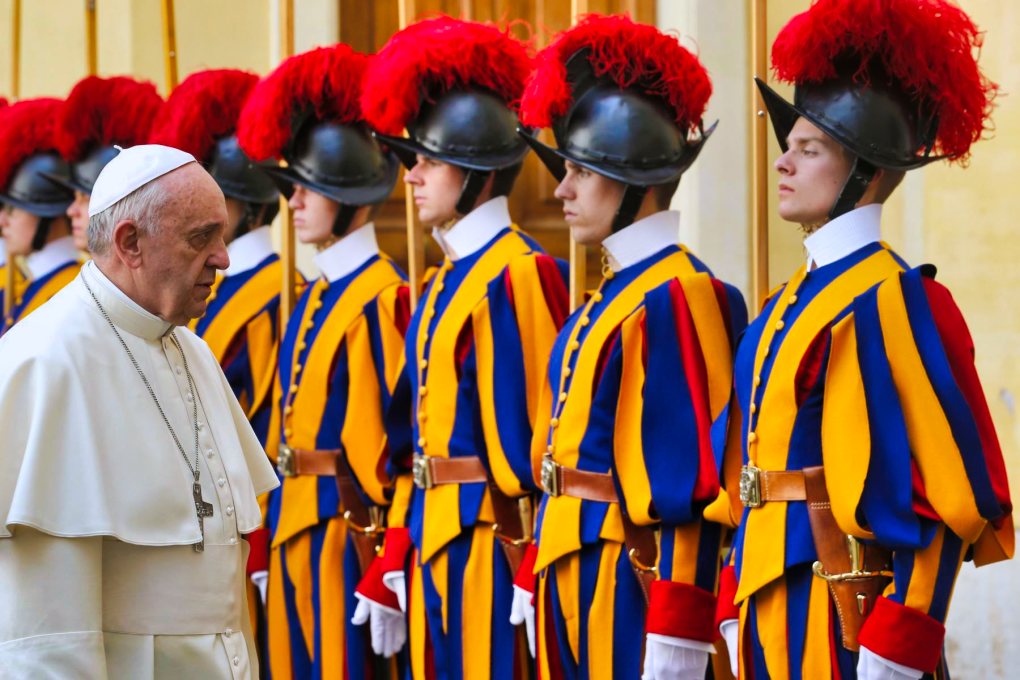
The guards normally wear blue doublets and berets. The official full dress uniform is of blue, red, orange and yellow with a marked Renaissance appearance. Commandant Jules Repond introduced it in 1914. The colors blue and yellow were in use from the 16th century and represented the Della Rovere coat of arms of Pope Julius II. The colour red was added to depict the Medici coat of arms of Pope Leo X.
The ordinary guardsmen and the sub-corporals wear the “tricolor” (yellow, blue and red) uniform without any rank distinctions except for a different model of halberd in gala dress. The corporals have red braid insignia on their cuffs and use a different, more spear-like, halberd.
The commissioned officers (captains, majors, vice-commander and commander) wear a red uniform with a different style of breeches, and golden embroidery on the sleeves. They have a longer sword, which is on display when commanding a group or a squadron of guards.
The main weapon of the halbardiers is the halberd. Corporals and vice-corporals carry a partisan polearm. Ranks above corporal on certain ceremonial occasions carry command batons.
Swearing In Ceremony
New recruits take part in a swearing-in on the sixth of May every year in the San Damaso Courtyard in the Vatican (Sixth of May is the anniversary of the Sack of Rome). Each new guard approaches the Pontifical Swiss Guard’s flag and grasps the banner in his left hand. He raises his right hand with his thumb, index, and middle finger extended along three axes, a gesture that symbolises the Holy Trinity. The chaplain of the guard reads aloud the oath in the languages of the guard (German, Italian or French).
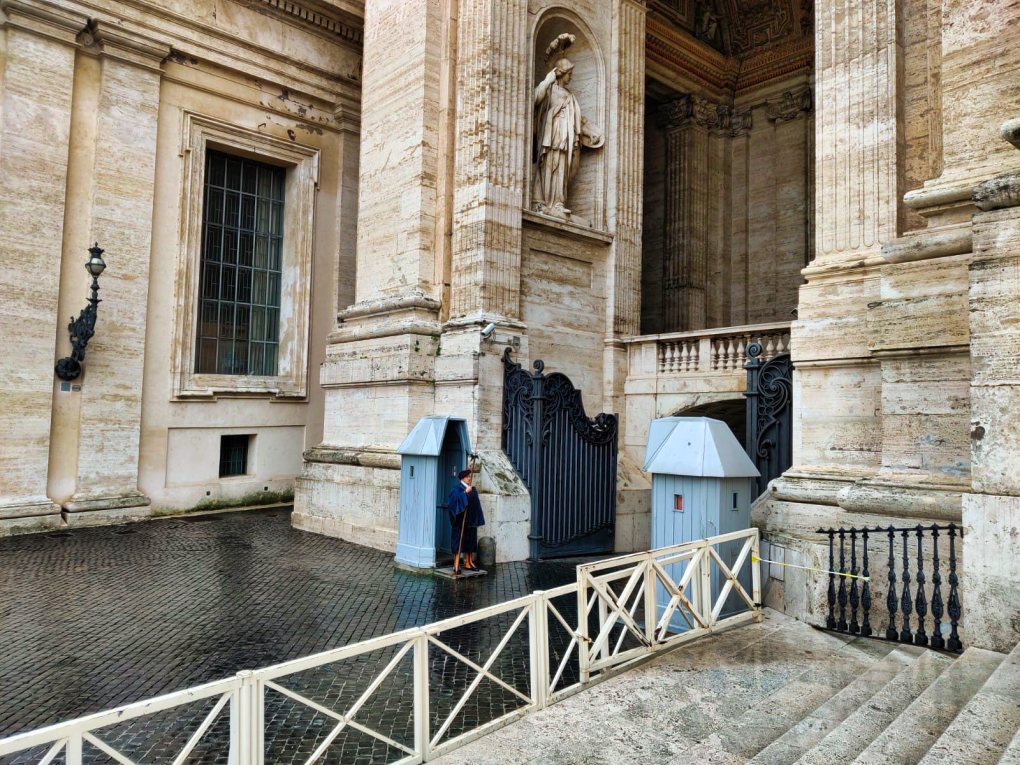
Their Roles
The Pontifical Swiss guards also perform ceremonial duties. Because of their responsibilities at the Vatican City, the role of the Vatican police is very crucial to the operation of the Vatican. When you enter the gates of Vatican City, you will meet the Vatican Swiss guard who will check you and give you directions on where you want to go. The guards also work closely with the Pope. During the public masses, these guards are the ones accountable for security of the Pope.
When to Talk to a Swiss Guard
One cannot just approach a Swiss guard and talk to him. There are signs that show when to approach him. When a Swiss guard is standing still with the halberd, he is on Honour Duty and would not wish to make a conversation. When he is standing with folded hands and facing the people, he is on Guard Duty. At this time, visitors may ask questions or pose for pictures.
If you liked the post, you could…
Join more than 5,000 fans of UASATISH by liking us on Facebook, or follow us on Twitter and Instagram.
Related Posts
- Roman Forum – the Ruins of Ancient Rome
- Vatican Museums Priceless Art Collections
- St Peter’s Basilica in Vatican City
